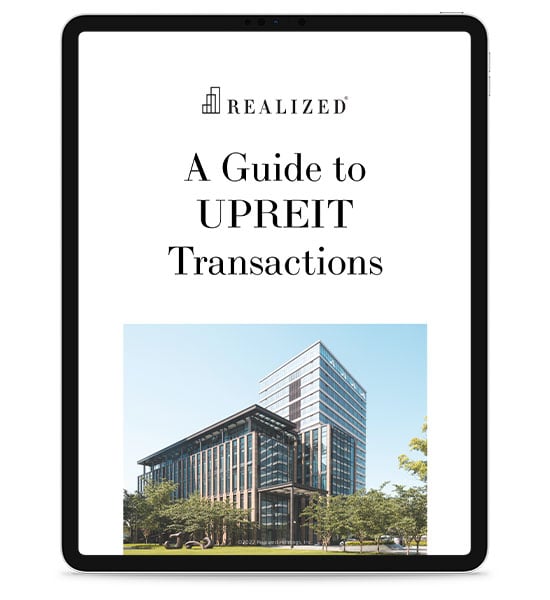
The real estate industry is under growing pressure to adopt sustainable practices, support social responsibility, and reduce carbon emissions as the world evolves into a more environmentally conscious and socially aware global society. Umbrella partnership real estate investment trusts (UPREITs) are no exception, and many are following environmental, social, and governance (ESG) standards as frameworks for sustainable management.
ESG-focused UPREITs are becoming a popular option for investors, and they bring both risks and opportunities. Realized 1031 has shared these pros and cons to help you get the full picture before committing to ESG-focused UPREITs.
Understanding the Goals of ESG
ESG standards are a set of criteria that evaluate a company’s social and environmental impact.
- Environmental: Looks at the efforts to reduce carbon emissions, control waste, lower energy use, and other issues concerning the environment.
- Social: Measures how a company helps people, communities, and cultures.
- Governance: Evaluates corporate governance factors, including executive compensation, board management practices, and company culture.
UPREITs are trust entities structured as operational partnerships (OP). Investors can enter through a 721 exchange, which allows them to own OP units and earn dividends. Today, UPREITs and other types of REITs are facing rising expectations from investors, such as ESG adoption. Some UPREITs highlight how, beyond providing income, they help investors participate in ESG efforts and contribute to positive societal and environmental change.
Opportunities in UPREIT ESG Investing
ESG-focused UPREITs offer a few unique advantages that traditional UPREITs may not offer. Examples are the following.
- Attracting ESG-Focused Capital: UPREITs that follow sustainability goals tend to attract ESG-focused capital and investors. This appeal allows the UPREIT to access a broader investor base and potentially benefit from higher valuations and greater liquidity.
- Reduced Regulatory Risk: Governments are now enacting stricter standards for energy use, carbon emissions, and more. ESG-compliant properties are less likely to face compliance issues since the assets are already taking a proactive approach. As such, UPREITs that have such properties have better risk mitigation from the effects of new laws.
- Energy Efficiency and Cost Savings: UPREITs that upgrade properties with green technologies, such as solar panels, high-efficiency lighting, and water-saving systems, can significantly lower operating expenses. These savings often translate into higher net operating income and better long-term returns for investors.
- Reputation and Tenant Retention: ESG-compliant buildings are generally safer, inclusive, and environmentally responsible. These benefits help attract better tenants and reduce turnover.
Risks in UPREIT Sustainability and ESG Investing
While ESG-focused UPREITs have their advantages, there are certain challenges you’ll need to consider before committing to one. Here are some of the potential risks.
- Lower Income: As ESG-compliant properties put more focus on sustainability and social impact efforts, the UPREIT’s income-generating efforts may not be as competitive as traditional operating partnerships.
- Inconsistent Standards: ESG metrics are not yet standardized across markets. What qualifies as “green” or “socially responsible” varies widely. UPREIT investors may struggle to evaluate ESG claims objectively, leading to potential greenwashing risks or misaligned expectations.
- Market Misalignment: ESG-focused UPREITs may not align with tenant or property demand in certain areas. For example, industrial properties in low-density regions may not yield strong returns that justify green retrofits. This dissonance between sustainability goals and market demand could result in lower performance from the UPREIT.
Summing Up: Considerations for ESG Investing in UPREITs
Sustainability and ethics in property investment are becoming strategic requirements for modern investors. There are UPREITs that follow ESG standards, offering additional benefits such as better tenant retention, reduced energy consumption, and appeal to more investors. However, make sure to consider risks like market misalignment or inconsistent ESG standards so you can set expectations before entering an ESG-compliant UPREIT.
Sources:
https://www.kroll.com/en/about-us/news/esg-reporting-system-effective-esg-disclosures
https://noda.ai/insights/building-energy-carbon-policies
https://www.ibm.com/think/topics/environmental-social-and-governance



